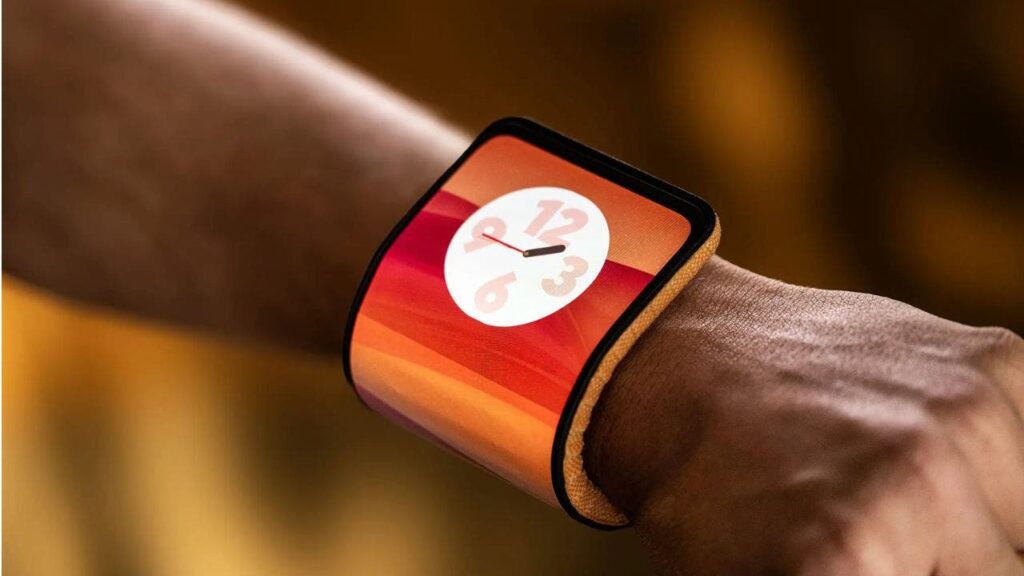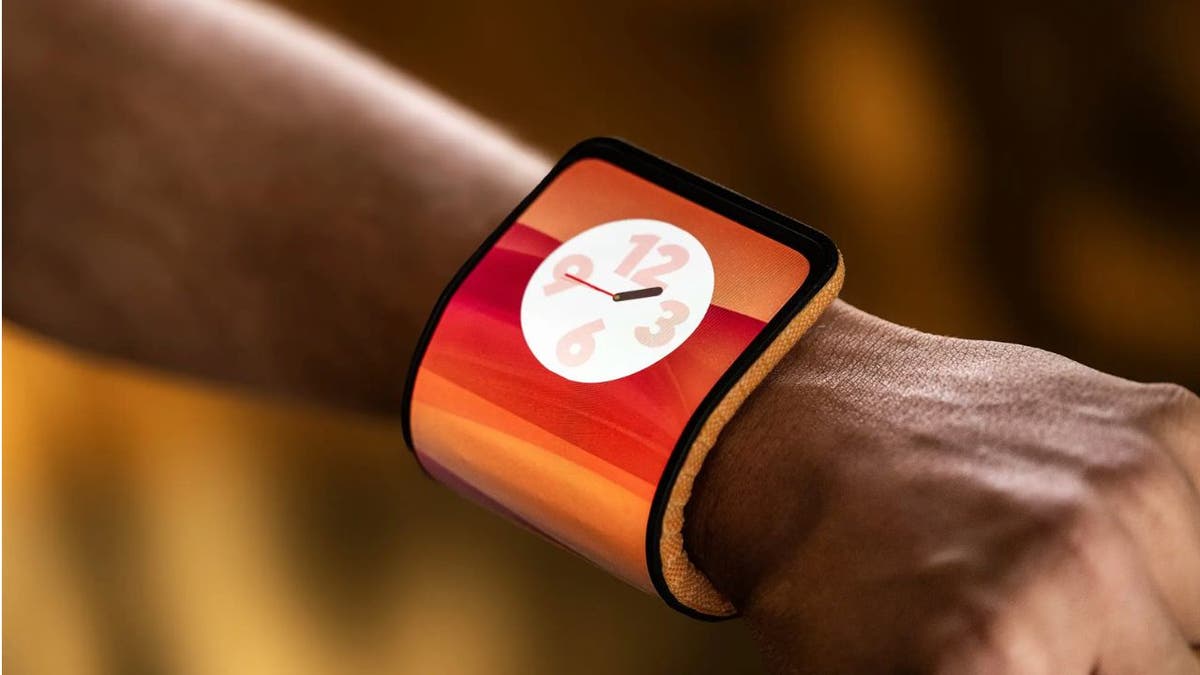
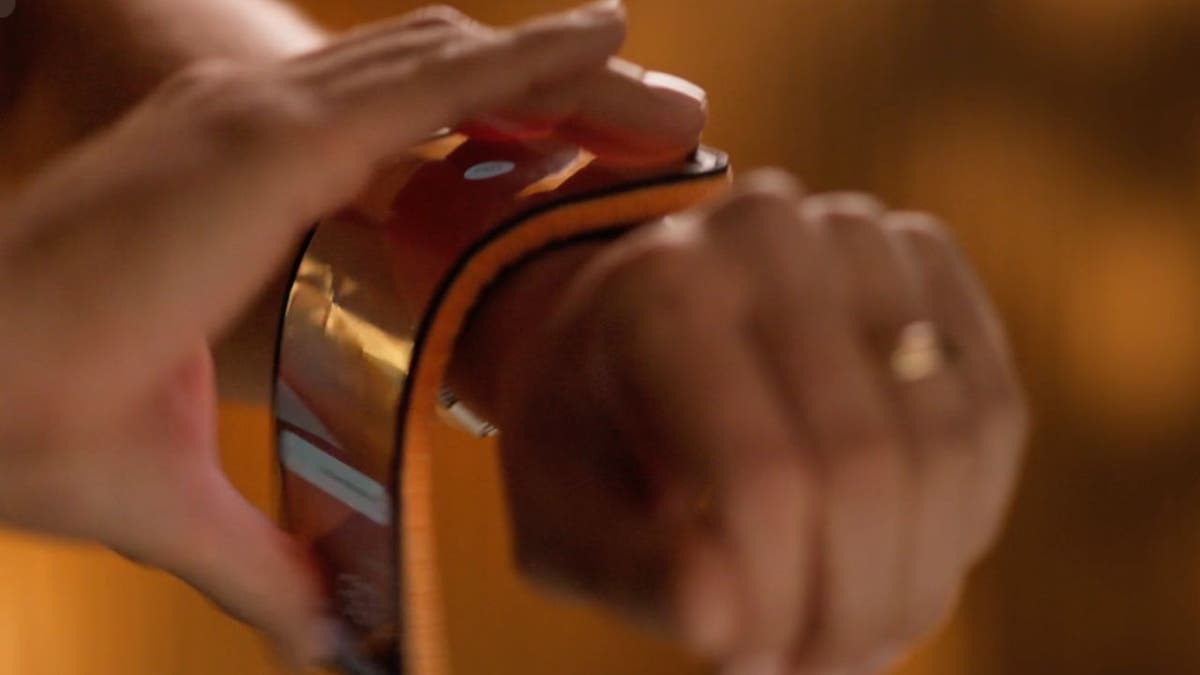
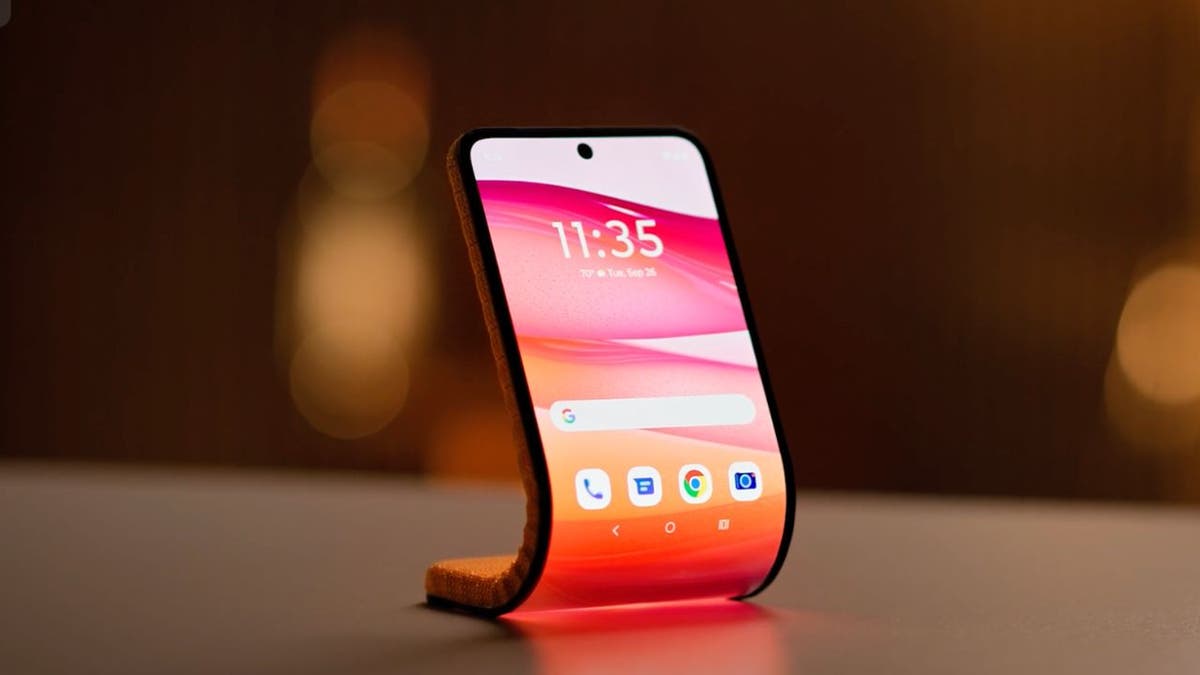
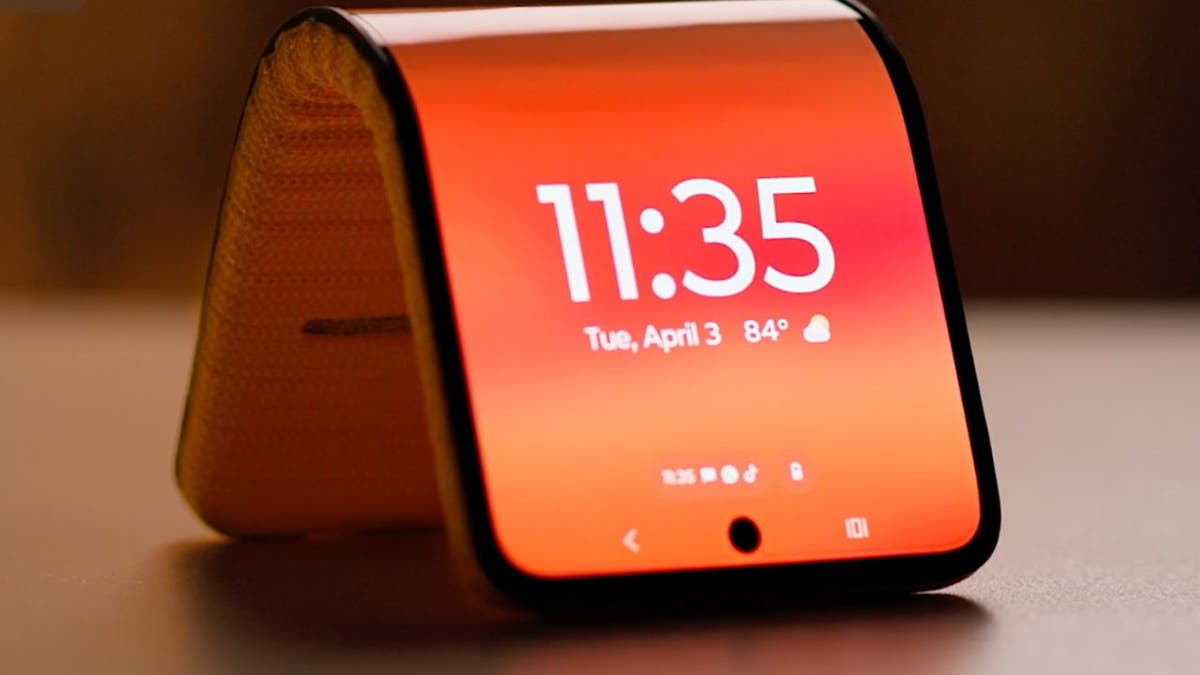
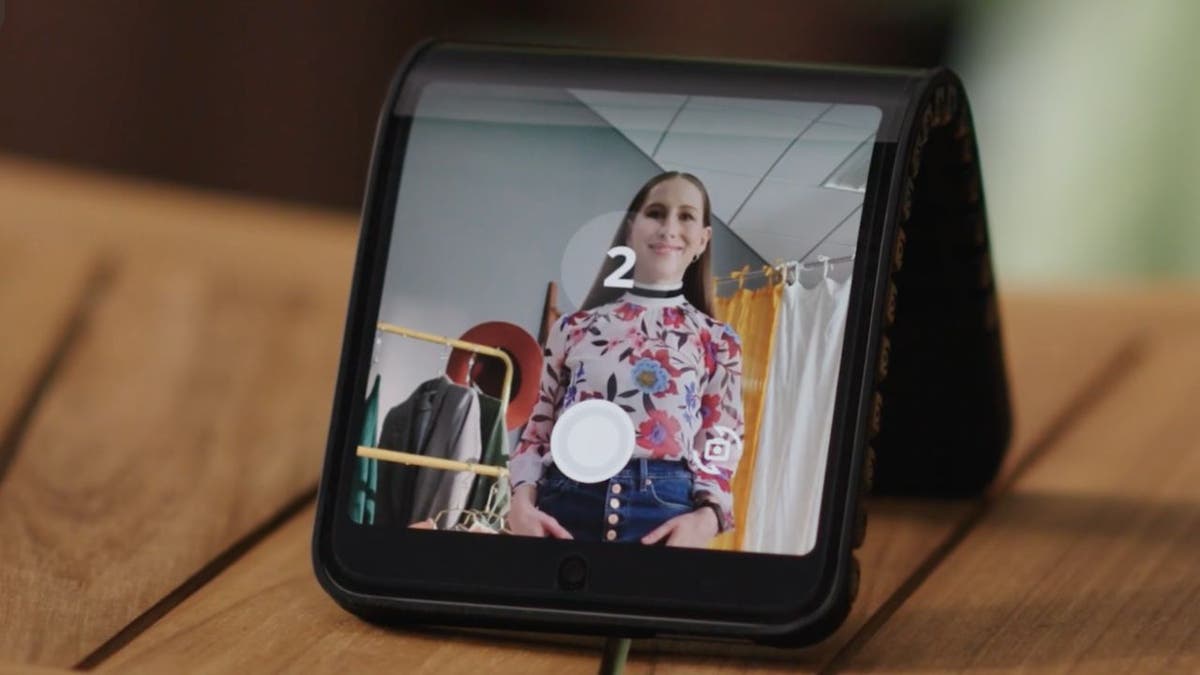
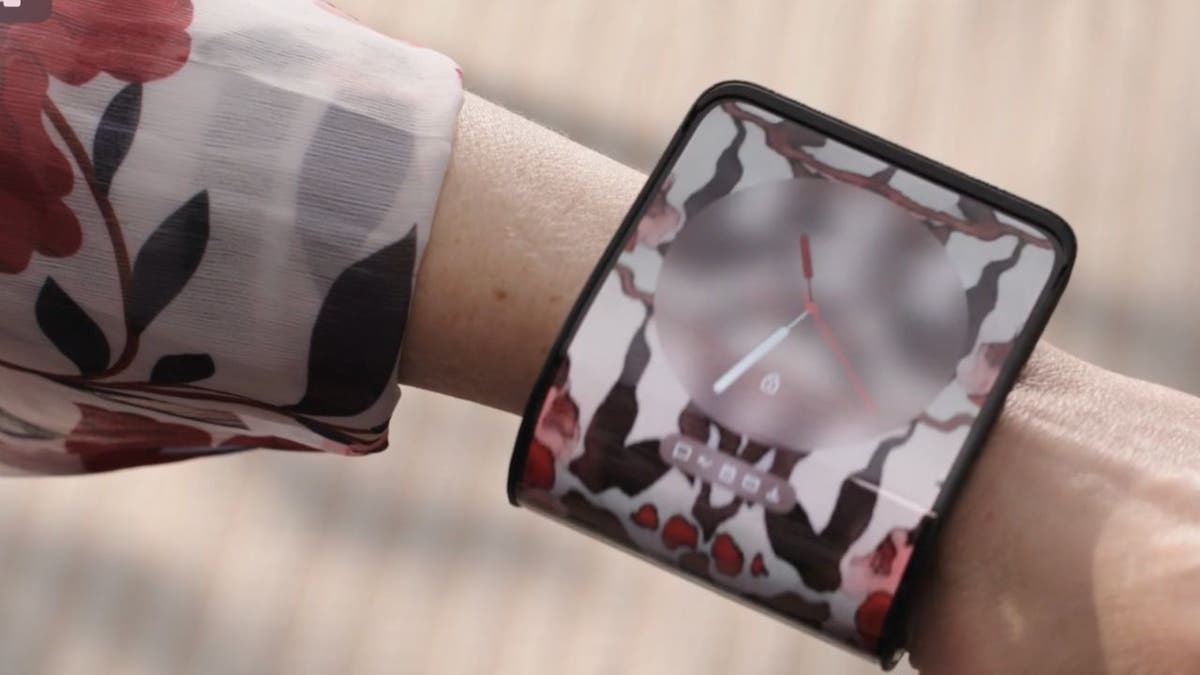
Imagine a phone that can bend to your will, literally. A phone that can transform from a flat screen to a wristband, or a stand, or anything you want. Sounds like science fiction, right? Well, it’s about to be a reality.
Motorola has unveiled a new concept of an adaptive display that can change its shape according to your needs. This is not just a cool gadget, but a whole new kind of fashion statement.
WHY GEN ZERS ARE GOBBLING UP FLIP PHONES AND REJECTING SMARTPHONES

Motorola has unveiled a new concept of an adaptive display that can change its shape according to your needs. (Motorola)
What is the ‘adaptive display’?
The adaptive display is a flexible OLED screen that can bend without breaking. It uses advanced materials and sensors to bend and fold into different forms. You can use it as a regular smartphone, a tablet, a wristband, a necklace or even a hat.
It can also detect your location, activity and environment and switch to the best mode for you. For example, it can turn into a fitness tracker when you’re working out, a navigation system when you’re driving, or a projector when you’re watching a movie. It can also sync with other smart devices and control them with voice commands or gestures.

The adaptive display is a flexible OLED screen that can bend without breaking. (Motorola)
WHAT IS ARTIFICIAL INTELLIGENCE (AI)?
How does the flexible phone work?
The flexible phone can change its shape depending on how you want to use it. You can use it like a normal Android phone when it’s flat, or you can bend it around your wrist like a smartwatch. You can also prop it up in different ways to watch videos or play games.
When laid flat, the 6.9-inch display runs a full Android experience, just like any smartphone. In the upright position, the device can be adjusted into a self-standing position, running a more compact form of full Android on a 4.6-inch display.
The display can also sense touch and pressure, so you can interact with it in various ways. For example, you can:
- Swipe, tap, pinch or zoom on the screen to navigate and control the apps
- Squeeze, twist or fold the screen to change its shape and mode
- Draw, write or sketch on the screen with a stylus or your finger to create and edit content
- Play games, watch videos or listen to music on the screen with headphones or speakers

The flexible phone can change its shape depending on how you want to use it. (Motorola)
How AI powers the bendable phone
Motorola’s adaptive display is like having multiple devices in one. And it’s not just a gimmick, it’s a smart device that has AI that can learn from your preferences and habits and optimize the device performance and battery life accordingly.
For example, the AI can detect the ambient light and adjust the brightness and contrast of the screen. It can also recognize your voice and gestures and launch the apps you need with a simple command or a flick of your wrist.
The AI can also suggest the best shape and mode for your current activity, such as reading, watching, gaming or working. You can either accept the suggestion or customize it to your liking.

Motorola’s adaptive display is like having multiple devices in one. (Motorola)
iPHONE 15 PRO’S BEST NEW SECRET WEAPON: HOW TO USE THE ACTION BUTTON
The phone that morphs to your mood
Here’s where Motorola steps it up a notch. I have to admit the bendable part is pretty innovative, but you can also use AI to customize the phone’s display to suit your mood and style.
Here’s how it works. You upload or snap a picture of your outfit to produce multiple unique AI-generated images that reflect your style.

You can customize the phone’s display to suit your mood and style. (Motorola)
These images can then be used as a custom wallpaper on your device. You can also choose from a variety of colors themes, and animations to express yourself with this wearable tech.

The adaptive display has many advantages over conventional phones. (Motorola)
What benefits does it have for conventional phones?
The adaptive display has many advantages over conventional phones. For one, it is more durable and resistant to damage. You don’t have to worry about cracking your screen or dropping your phone.
You can also use it in different situations and environments, such as outdoors, indoors or in the dark. The adaptive display can also enhance your personal style and expression.
You can choose the color, pattern and shape of your phone to match your mood and outfit. You can also switch between different modes, such as a watch, a bracelet, a necklace or a ring.
How can you get one of these futuristic phones?
The adaptive display is still in the prototype stage, and Motorola has not announced a release date or a price yet. However, they are working hard to make it available to the public as soon as possible.
Kurt’s key takeaway
The bendable phone is a really cool innovation that could change the way we use and interact with our phones. Motorola has shown us a glimpse of the future with this concept, and I can’t wait to see it become a reality. Until then, we can only imagine the possibilities and the potential of this futuristic wearable tech.
What do you think of this flexible phone? Would you buy one when it becomes available? How would you use it and what shape would you choose? Let us know by writing us at Cyberguy.com/Contact
For more of my tech tips and security alerts, subscribe to my free CyberGuy Report Newsletter by heading to Cyberguy.com/Newsletter
Ask Kurt a question or let us know what stories you’d like us to cover
Answers to the most asked CyberGuy questions:
Copyright 2023 CyberGuy.com. All rights reserved.
Kurt “CyberGuy” Knutsson is an award-winning tech journalist who has a deep love of technology, gear and gadgets that make life better with his contributions for Fox News & FOX Business beginning mornings on “FOX & Friends.” Got a tech question? Get Kurt’s CyberGuy Newsletter, share your voice, a story idea or comment at CyberGuy.com.
[ad_2]
Source link

